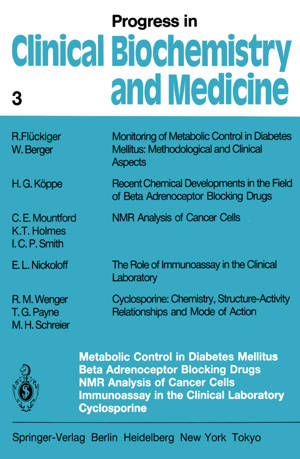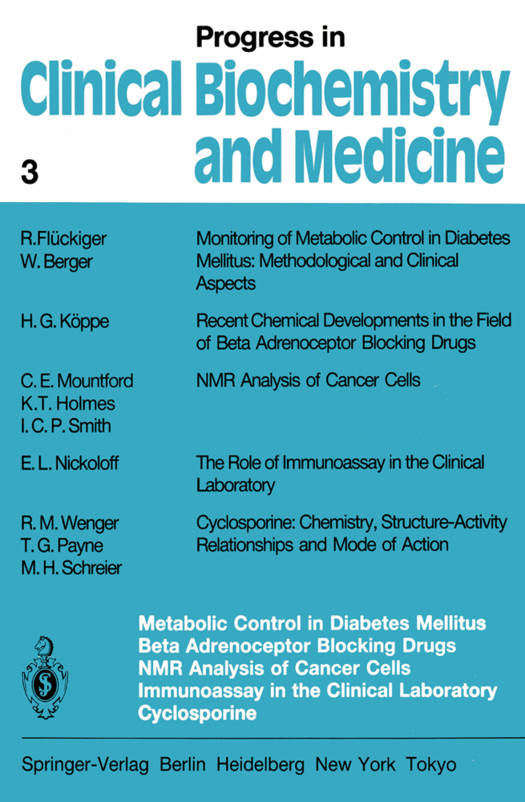
- Afhalen na 1 uur in een winkel met voorraad
- Gratis thuislevering in België vanaf € 30
- Ruim aanbod met 7 miljoen producten
- Afhalen na 1 uur in een winkel met voorraad
- Gratis thuislevering in België vanaf € 30
- Ruim aanbod met 7 miljoen producten
Zoeken
Metabolic Control in Diabetes Mellitus Beta Adrenoceptor Blocking Drugs NMR Analysis of Cancer Cells Immunoassay in the Clinical Laboratory Cyclosporine
€ 150,48
+ 300 punten
Omschrijving
The close association between blood glucose control and the well-being of the patient, as well as the risk for the development of the "late" complications of 3 diabetes, make it necessary to attain near normalisation of blood glucosel- ). Signifi- cant progress has been made in this direction in the last few years because of the advancement of analytical techniques for the monitoring of both metabolic status and the functional state of the pancreas and the kidneys, organs involved in the disease process. The respective methodologies are the test strips for self-monitoring of glucose in blood and urine, the measurement of the nonenzymatic glycosylation of hemoglobin and serum proteins, the C-peptide assay, and the determination of small amounts of albumin in urine. The test strip methodology for determination of glucose in blood and urine has made possible home blood glucose monitoring which enables the patient to aim for treatment targets near the physiological range. To this information on short term glycemia obtained by the patient, the determination of hemoglobin glycosylation in the clinical chemistry laboratory adds quantitative information about averaged long- term glycemic control. The C-peptide assay allows evaluation of the residual pancreatic function in the presence of exogenous insulin. Results of a C-peptide assay are helpful in selecting the appropriate treatment for poorly controlled maturity-onset diabetes. The detection of microalbuminuria, an abnormal albumin excretion below the level of "Albustix" detection, establishes nephropathy before renal damage becomes irreversible.
Specificaties
Betrokkenen
- Uitgeverij:
Inhoud
- Aantal bladzijden:
- 192
- Taal:
- Engels
- Reeks:
- Reeksnummer:
- nr. 3
Eigenschappen
- Productcode (EAN):
- 9783642710001
- Verschijningsdatum:
- 22/11/2011
- Uitvoering:
- Paperback
- Formaat:
- Trade paperback (VS)
- Afmetingen:
- 170 mm x 244 mm
- Gewicht:
- 331 g

Alleen bij Standaard Boekhandel
+ 300 punten op je klantenkaart van Standaard Boekhandel
Beoordelingen
We publiceren alleen reviews die voldoen aan de voorwaarden voor reviews. Bekijk onze voorwaarden voor reviews.







